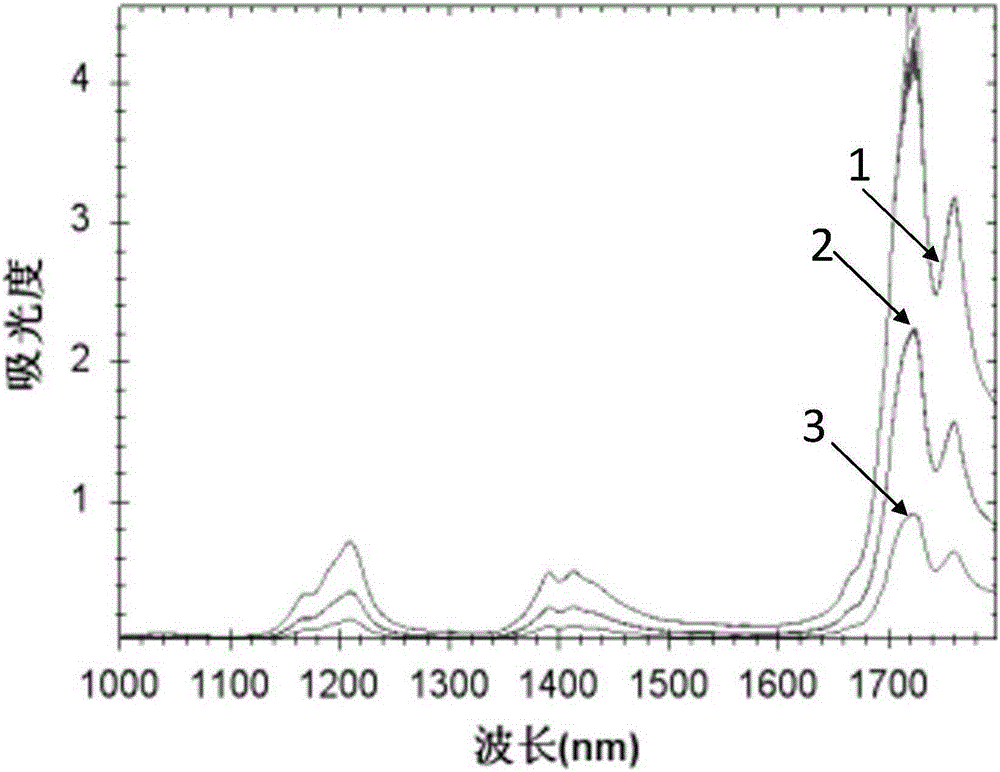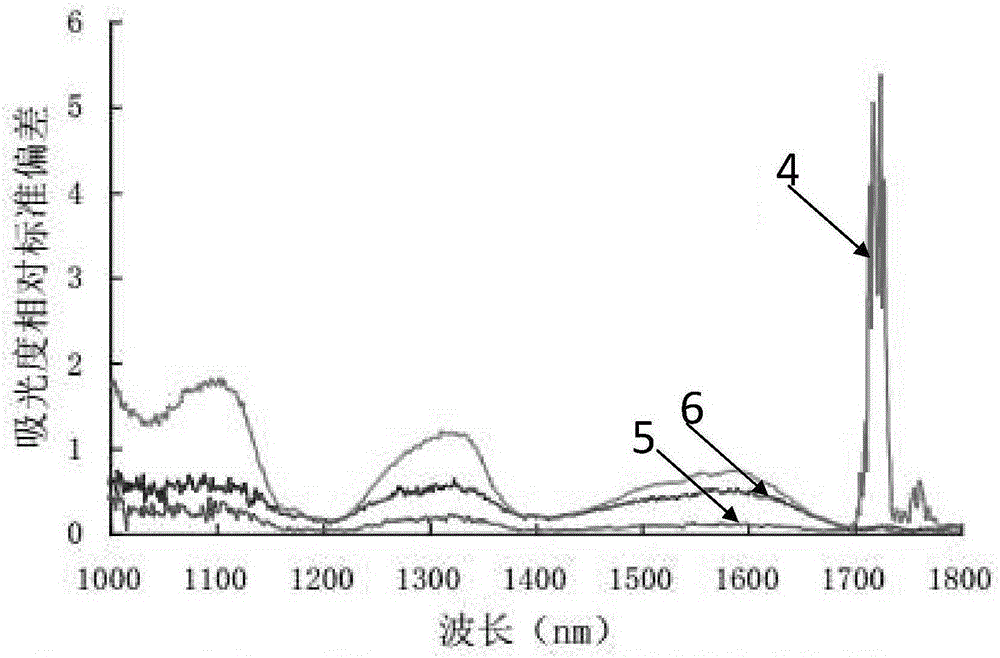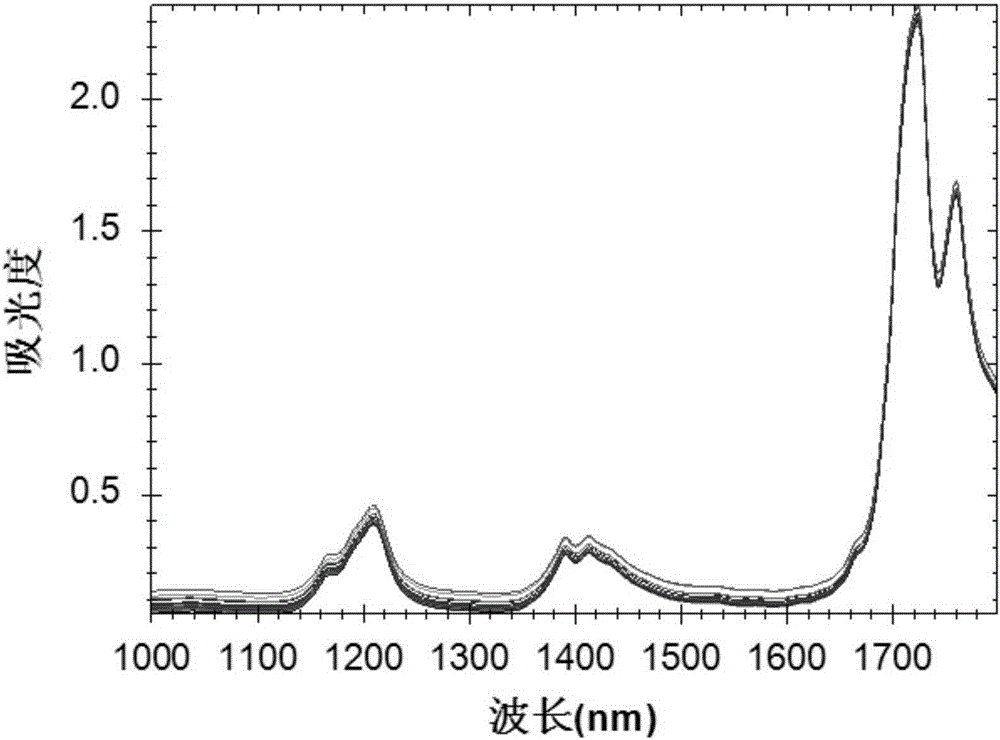Infrared detection method for rapeseed oil quality and application
A near-infrared detection and rapeseed oil technology, which is applied to measurement devices, material analysis by optical means, instruments, etc., can solve the problems of few near-infrared quantitative models, unclear near-infrared characteristic wavelengths, and unclear models.
- Summary
- Abstract
- Description
- Claims
- Application Information
AI Technical Summary
Problems solved by technology
Method used
Image
Examples
Embodiment 1
[0191] Example 1: Near infrared detection of palmitic acid in rapeseed oil
[0192] 1) Rapeseed oil samples: a total of 125 rapeseed oil samples are pure rapeseed oil samples of different origins and grades, and there are also 20 rapeseed blended oil samples, totaling 145;
[0193] 2) Determination of palmitic acid content in rapeseed oil according to GB / T17377-2008, the basic statistical data of palmitic acid content in rapeseed oil samples are shown in Table 1;
[0194] The basic statistical data (%) of palmitic acid content of table 1 rapeseed oil
[0195]
[0196] 3) Shake the rapeseed oil sample evenly, place it in a quartz stone sample cell with an optical path of 5 mm, cover it, and scan it with a near-infrared spectrometer. Before scanning, it needs to be turned on and preheated for 30 minutes. After preheating, the number of debugging scans is 10 times, the temperature of the detection room is 40°C, the fixed wavelength range is 1000-1799nm, the scanning interval ...
Embodiment 2
[0209] Example 2: Rapeseed oil oleic acid, linoleic acid, linolenic acid, stearic acid, arachidonic acid, erucic acid, acid value, peroxide value, iodine value, color yellow value, red value, viscosity near-infrared detection
[0210] 1) With the method detection method of embodiment 1 step 1) the content of rapeseed oil linoleic acid, linolenic acid, oleic acid, stearic acid, arachidonic acid, erucic acid, measure rapeseed oil acid value, peroxide value, See Table 4 for iodine value, color yellow value, red value, and viscosity index.
[0211] Table 4 Basic statistical data of rapeseed oil fatty acids (mg / g)
[0212]
[0213] 3) According to the method of embodiment 1 step 3), the sample is scanned by near-infrared spectrum;
[0214] 4) According to the method of embodiment 1 step 4), the abnormal sample is removed and the sample set is divided into the sample;
[0215] 5) Near-infrared spectrum preprocessing: for the step 4) correction set absorbance value x ij Perfor...
Embodiment 4
[0351] Example 4: The impact of abnormal sample removal on model accuracy
[0352] Taking the index of rapeseed oil linolenic acid as an example, the removal of abnormal samples will be further explained (the removal of abnormal samples of other indicators is the same as in this embodiment, and the present invention is not exhaustive. Those skilled in the art can repeat the method of the present invention by using the method of the present invention. Effect).
[0353] The near-infrared spectrum scanning method of rapeseed oil and the detection method of sample linolenic acid are the same as in Example 1, and the partial least squares method is used to respectively establish the calibration of linolenic acid for the untreated original sample set and the sample set after abnormal samples are removed. Model, the calibration set determination coefficient and standard deviation of the two models, and the calculation results of the verification set standard deviation are shown in Ta...
PUM
| Property | Measurement | Unit |
|---|---|---|
| valence | aaaaa | aaaaa |
Abstract
Description
Claims
Application Information
 Login to View More
Login to View More - R&D
- Intellectual Property
- Life Sciences
- Materials
- Tech Scout
- Unparalleled Data Quality
- Higher Quality Content
- 60% Fewer Hallucinations
Browse by: Latest US Patents, China's latest patents, Technical Efficacy Thesaurus, Application Domain, Technology Topic, Popular Technical Reports.
© 2025 PatSnap. All rights reserved.Legal|Privacy policy|Modern Slavery Act Transparency Statement|Sitemap|About US| Contact US: help@patsnap.com



